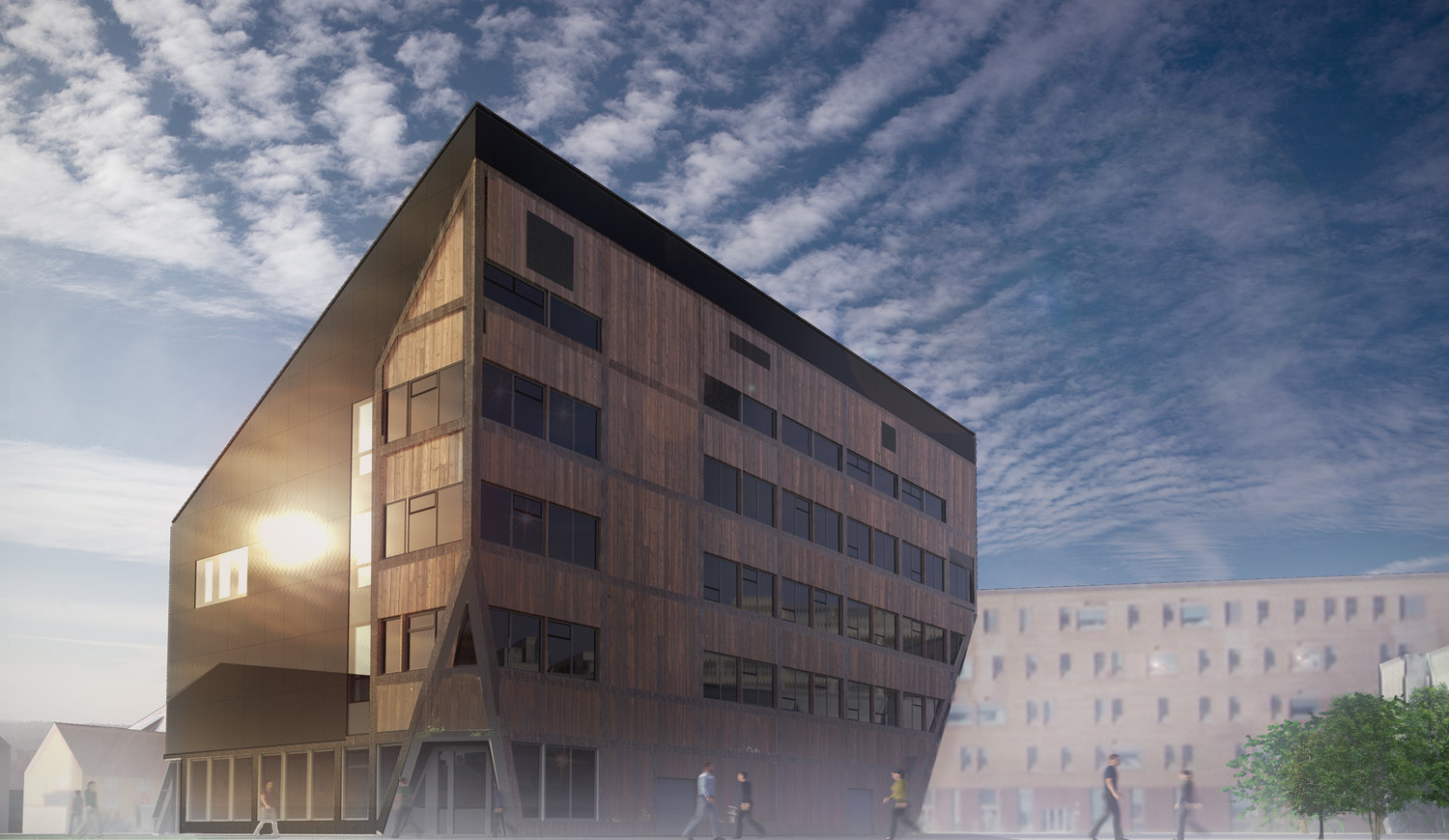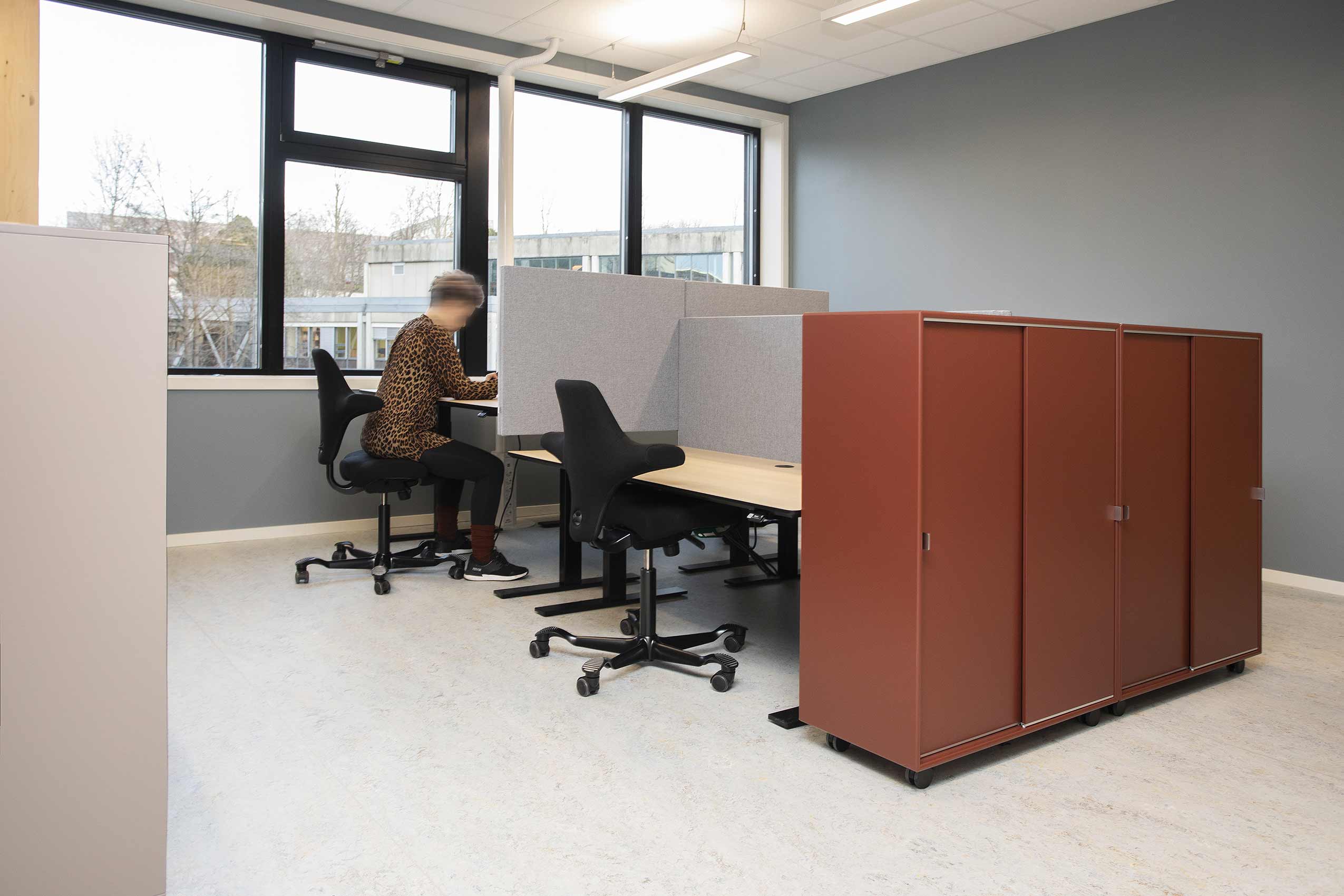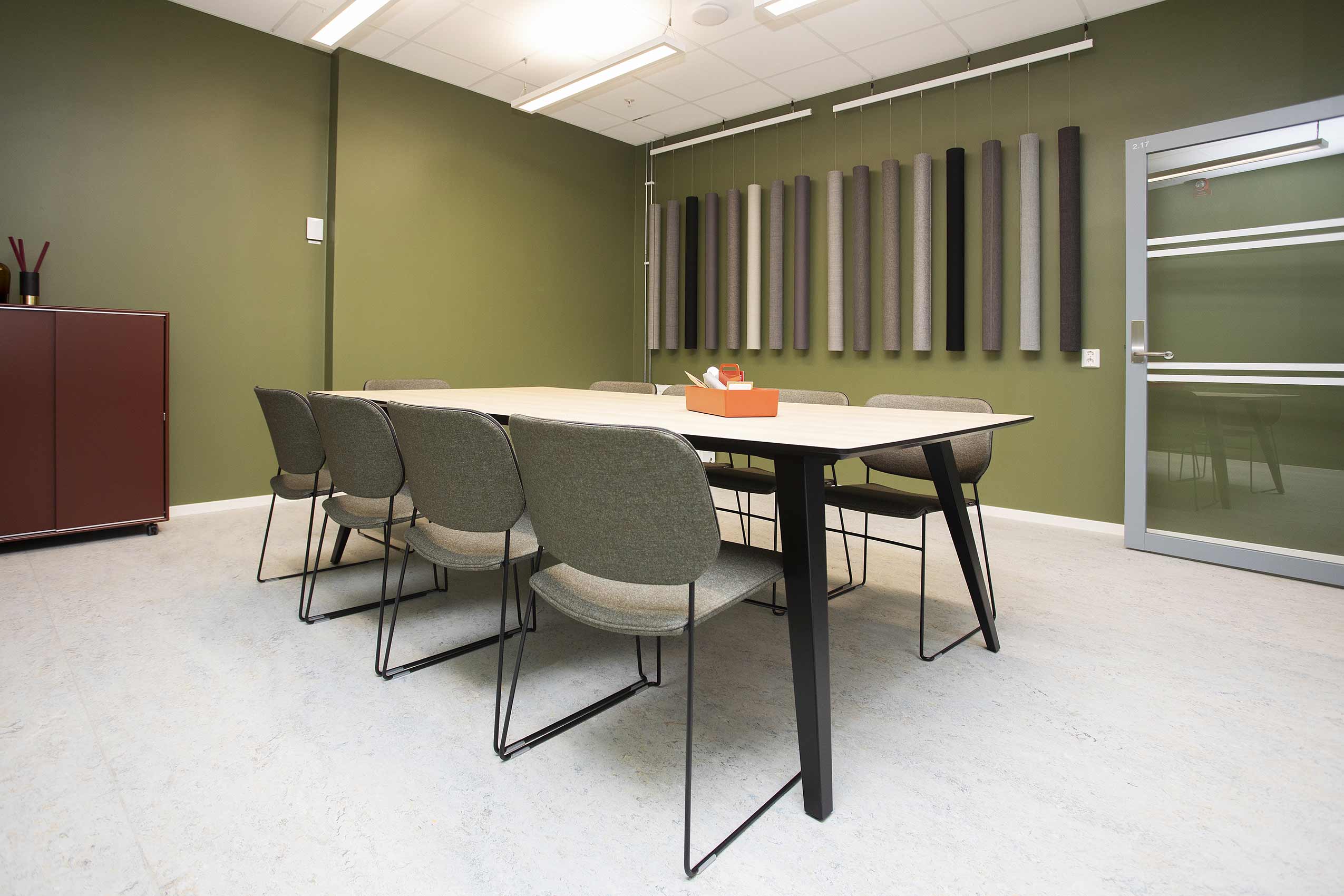The ZEB (Zero Emissions Building) Laboratory is a 4-storey, 2,000 square meter building located in the Trondheim University College, owned and operated by NTNU and SINTEF. This new experimental research centre is positioned close to the existing facilities of the SINTEF community, a place where the Norwegian research firm works on innovative zero-emission materials and solutions, developed with the aim of eliminating greenhouse gas emissions caused by buildings and construction.
According to architects LINK Arkitektur, the ZEB-Lab will be the most sustainable building in the world with documented climate accounts from every stage of the build. Components and technical systems were designed to be modified and replaceable over the years, with the overall shape inspired by the form of silicon crystals. The roof and facades are covered in solar panels, tilted 42 degrees south, to catch as much sunlight as possible for optimum energy production.
This vision for the ZEB Lab is supported by the Norwegian Research Council, SINTEF and NTNU, with the new location housing a living laboratory, office and teaching environments for students and researchers to test and develop new solutions when it comes to sustainability and the environment.
Interior Architects at Lindbak managed the entirety of the interior design and architecture, including the choice of furniture, materials, delivery and assembly. As with the rest of the project, the process was characterised by finding sustainable and environmentally friendly solutions in every aspect to meet the client’s needs.
Development of the interior began in the spring of 2019, with the environmental credentials at the very top of the list, whilst also complimenting an interior colour scheme devised by university lecturer Kine Angelo of the Department of Architecture & Technology at NTNU.
Several Flokk designs feature throughout the build in both private, collaborative and social environments.
Two task chairs from Flokk brand HÅG featured in the interior project, the HÅG Capisco & HÅG Futu, specified across the office landscape on the 2nd and 3rd floor, in a range of study and focused workspaces. The HÅG Capisco is made with up to 56% recycled materials, including recycled aluminium, steel, polyester and polypropylene plastic, whilst the HÅG Futu is up to 40% recycled in the same materials. Both are also designed for long life, with no toxic chemicals or glues, and non-composite components to allow for easy parts replacement to further extend their lifespans. They are also available in a wide range of environmentally friendly fabrics in many colours, allowing them to be perfectly matched to the interior aesthetic.
Designs from Flokk brand Offecct also feature, including the award-winning Soundsticks by Andrea Ruggiero, which are made from 100% recycled materials - textile scraps from upholstery production with recycled aluminium caps. This acoustic solution was combined with Offecct Lite chairs designed by Broberg & Ridderstråle to furnish a range of meeting rooms. Offecct Murano was an additional design, an easy chair designed by Luca Nichetto, which was used in social spaces.
Speaking about the use of these designs, Lindbak Interior Architect Liss Mari Mølnvik Øyås said; “It was very easy for us in the choice of furniture. Since Flokk has a high focus on the environment and contemporary design that meets the needs of both NTNU and Lindbak. What is especially nice is that all the rooms that feature the Offecct Soundsticks are noticeably different. The air in the room was tested before installation, and measurements taken afterwards showed a big difference in the sound. This was something the customer thought was very exciting.”
You can take a virtual tour of the building in the video below





